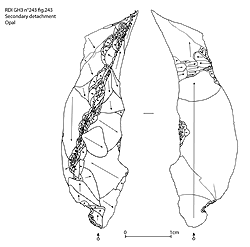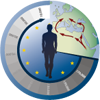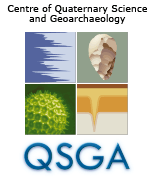During the past month of February, Ine Leonard from B1 project travelled to the town of Tărgovisţe in Romania, 80 km northwest of Bucaresţi, with one primary goal: to see the archaeological material that was discovered during the 2009 and 2010 excavations of the Collaborative Research Centre 806 "Our way to Europe" stored at the Faculty of Humanities of the Valahia University of Târgovişte. She did not have to look at the different tools or blank types, because Dr. Valéry Sitlivy already completed that task. Her main interest was a technological one: How did early Upper Palaeolithic humans of the open-air sites of the Banat achieve refined laminar products out of a rough block of raw material moulded by the forces of nature? Which technological steps did they have to perform in order to open cores or to maintain its shape? With these questions in mind, she analysed the lithic record of the archaeological assemblages GH3 and GH4 from Romaneşti-Dumbrăviţa, Coşava and Tincova.
Ina started by looking at the cores because they represent the final step(s) of reduction before becoming obsolete. A significant part of the analysis was embedded in studying the scars that are visible on the cores and on the remaining lithic artefacts. The superposition of scars reveals a part of the reduction history of each piece. Therefore, studying these scars is a logic and consequent step in technological analysis of the lithic artefact record. Core and scar analyses have shown that besides the reduction of laminar products, other detachments were produced as well, which do not convey to the general layout of these laminar products. They often have either a preparation- or a maintenance-related role in the reduction process. Altogether, these three analytical working methods made the trip worthwhile, and it is aimed at presenting the interesting results soon.
 One of the technological pieces of the archaeological assemblage GH3 of Romaneşti-Dumbrăviţa. Drawing: Ine Leonard |



































